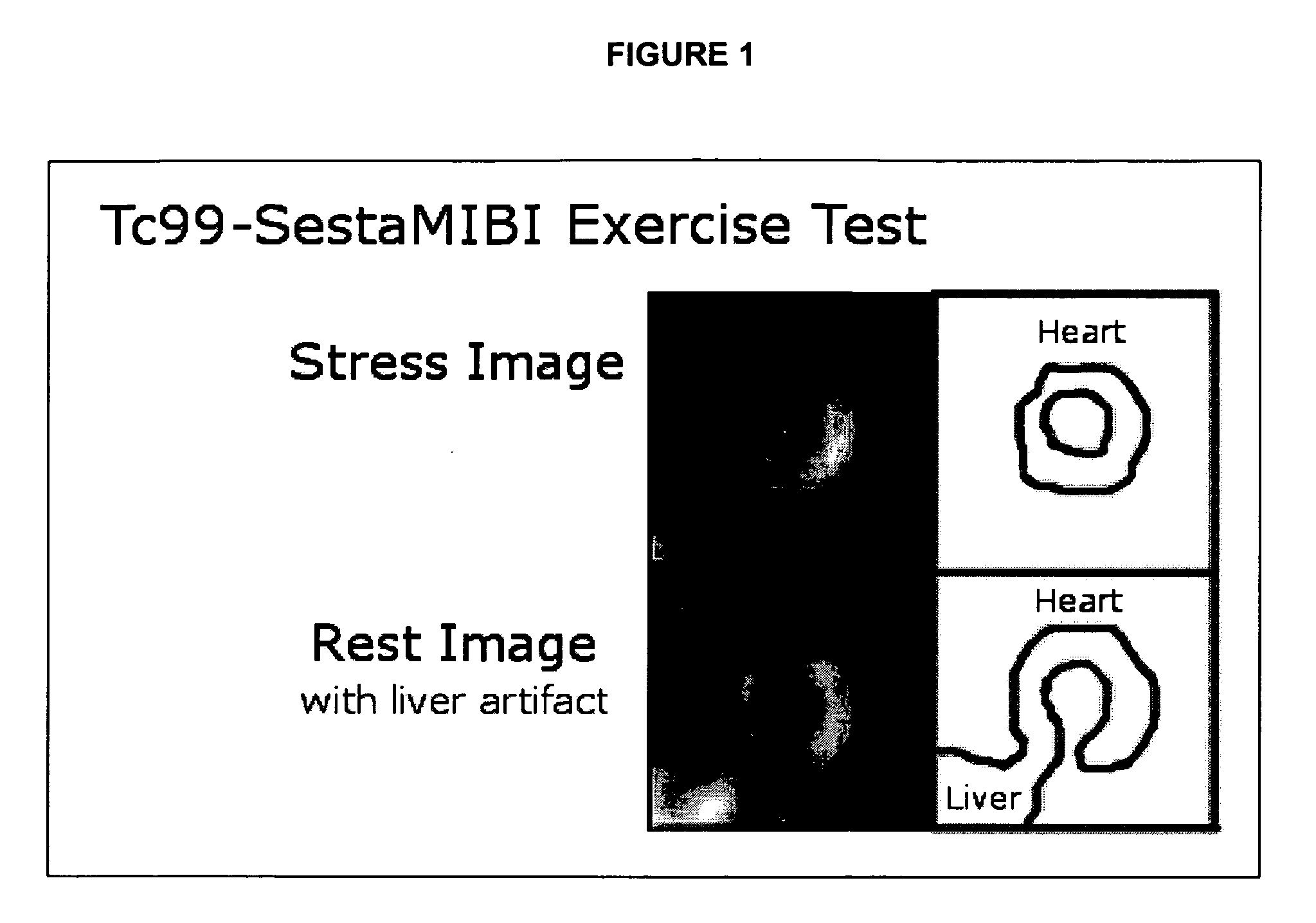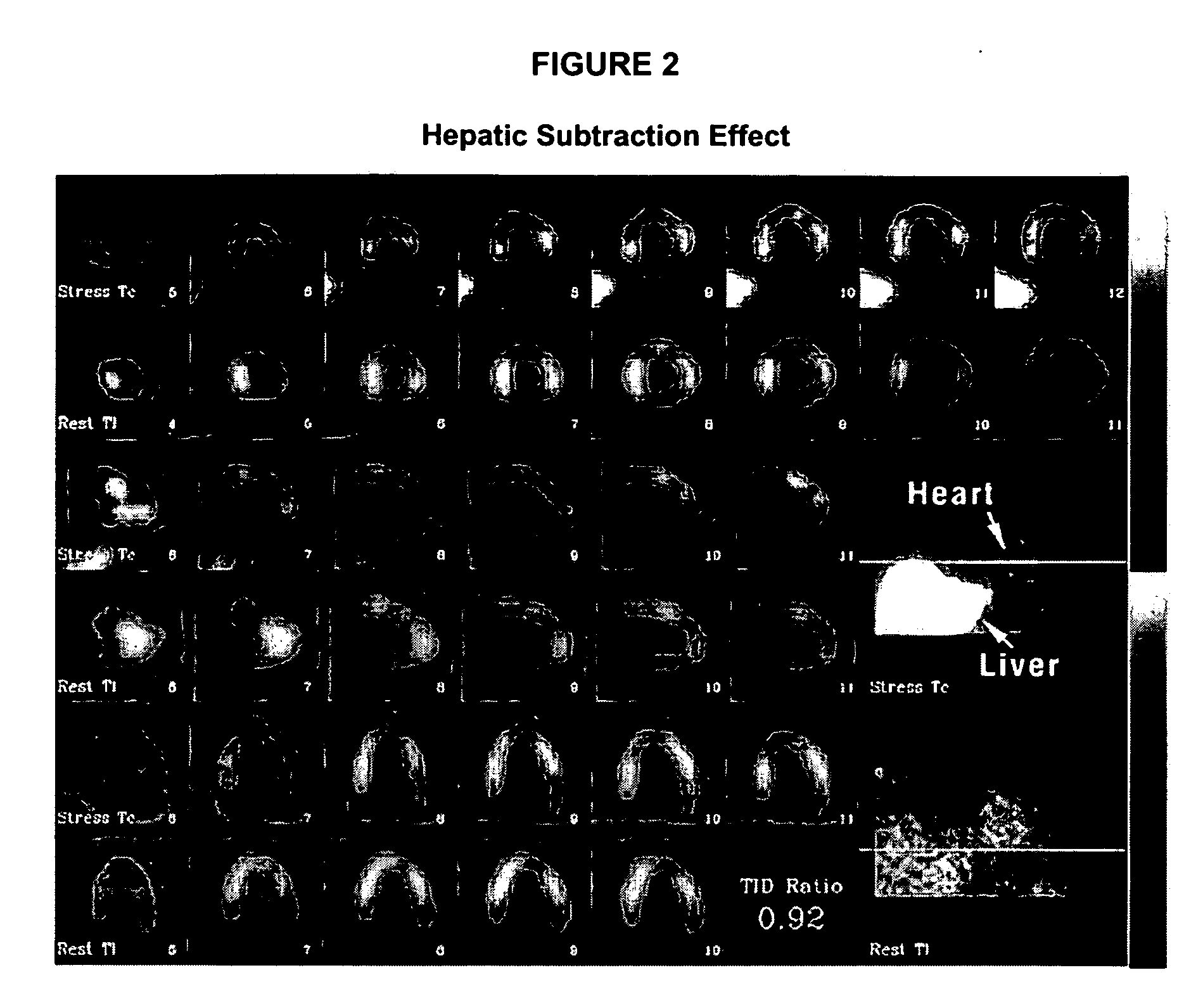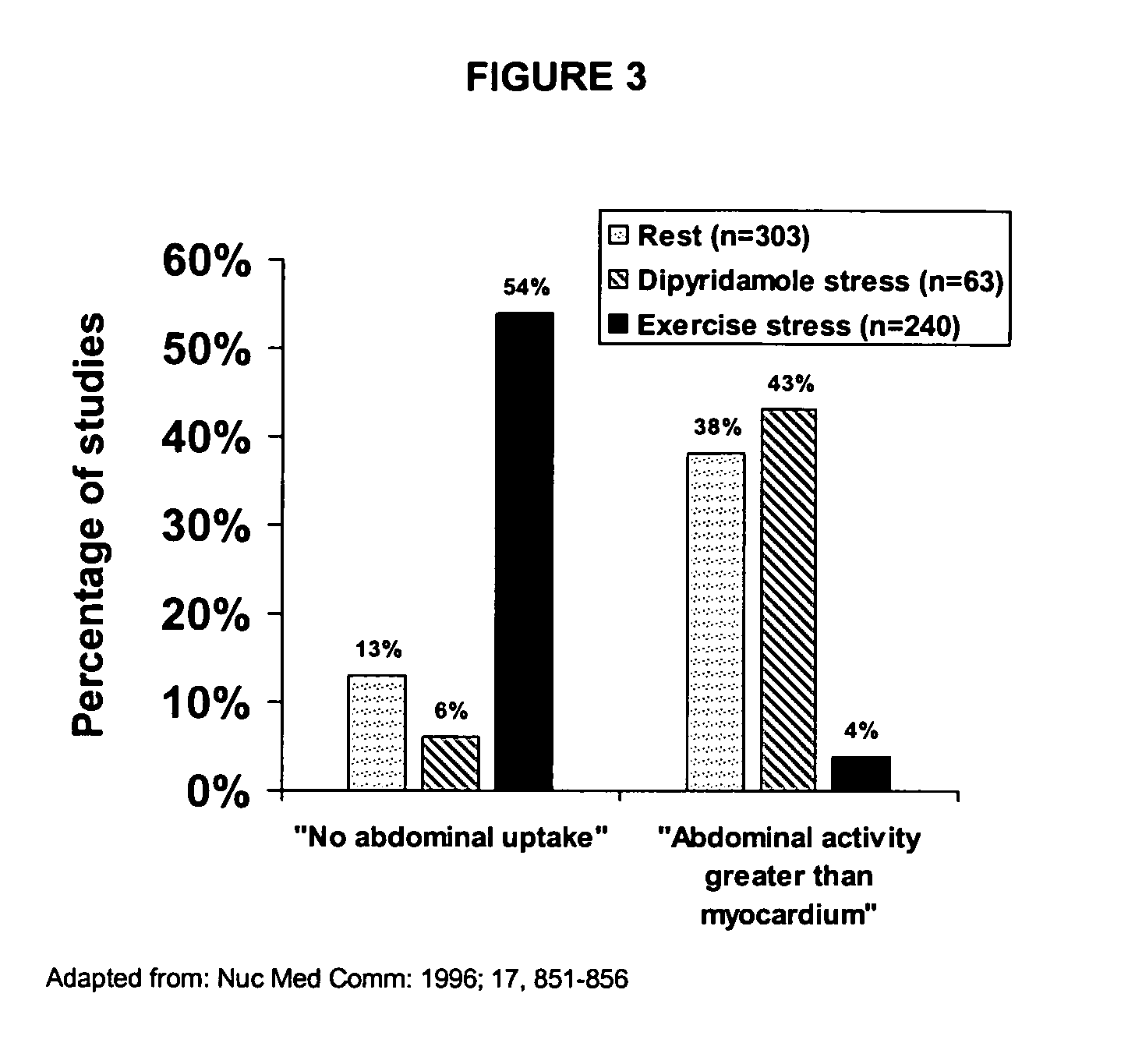Use of somatostatin analogs in myocardial perfusion imaging
- Summary
- Abstract
- Description
- Claims
- Application Information
AI Technical Summary
Benefits of technology
Problems solved by technology
Method used
Image
Examples
examples
Myocardial Perfusion Imaging Using Octreotide and Pharmacologic Stress
[0091]Fifteen minutes prior to injection of a radiotracer, a bolus injection of 100 mcg octreotide is administered, followed by a constant infusion of 100 mcg per hour for the remainder of the study including rest and stress injections. Adenosine pharmacologic stress is administered as normal without suspension of octreotide. After the final perfusion scan is acquired, octreotide is turned off.
[0092]Analysis of myocardial perfusion imaging study is performed as usual except extracardiac uptake of radiotracer as a result of reduced splanchic blood flow are reduced and efficacy of analysis is improved.
Myocardial Perfusion Imaging Using Octreotide and Pharmacologic Stress
[0093]Ten minutes prior to injection of a radiotracer, a bolus injection of 100 mcg octreotide is administered, rest perfusion images are acquired as normal. Ten minutes prior to adenosine pharmacologic stress, a second 100 mcg octreotide bolus is ad...
PUM
| Property | Measurement | Unit |
|---|---|---|
| Flow rate | aaaaa | aaaaa |
| Stress optical coefficient | aaaaa | aaaaa |
Abstract
Description
Claims
Application Information
 Login to View More
Login to View More - R&D
- Intellectual Property
- Life Sciences
- Materials
- Tech Scout
- Unparalleled Data Quality
- Higher Quality Content
- 60% Fewer Hallucinations
Browse by: Latest US Patents, China's latest patents, Technical Efficacy Thesaurus, Application Domain, Technology Topic, Popular Technical Reports.
© 2025 PatSnap. All rights reserved.Legal|Privacy policy|Modern Slavery Act Transparency Statement|Sitemap|About US| Contact US: help@patsnap.com



